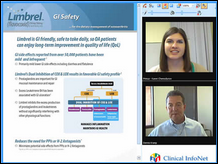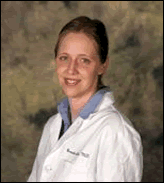The article about Pediatric Associates in CA has a nugget with a potentially outsized impact: the implication that VFC vaccines…
News 5/19/09
Specialists in the Phoenix area will soon be able to provide consultations via videoconferencing. St. Joseph’s Hospital and Medical Center is implementing Clinical InfoNET technology to enable specialists at the hospital to connect with referring doctors in the community.
The ONC releases its timetable to address the HITECH portion of the ARRA. Missing: details related to the “meaningful use” definition. Instead, the report says, “specific understanding of what constitutes meaningful use will be determined through a process that will include broad stakeholder input and discussion. HHS is developing milestones for major phases of the program’s activities with planned delivery dates.” Translation: we haven’t figured out what we are doing yet and aren’t ready to commit to anything. The good news is that we can expect a few more weeks of opinions from every “expert”.
Children’s Medical Center in Dallas has become the first hospital to tweet in real time during a transplant surgery. Can someone explain the value of this? Wouldn’t watching it and/or reading a summarized transcript be a better use of time?
Physicians spend an average of three hours a week interacting with health insurance plans, according to a study sponsored by The Commonwealth Fund and the RWJ Foundation. Nurses spend 23 weeks a year per doctor and clerical staff spend 44 weeks a year per doctor. Estimated total national cost: between $23 billion and $31 billion a year, which is six times more than the federal government spends on the SCHIP program. A second study found that clinicians spend an average of 35 minutes a day on billing and insurance-related tasks. After adding the cost of administrative staff to perform billing functions, the annual cost for these activities is over $85,000 per physician, or 10% of revenue.
Healthcare attorneys warn doctors not to automatically delete e-mails from patients, but instead archive them to maintain a complete medical record. In fact, using e-mail for doctor/patient communication should be a business decision that weighs the financial and liability risks and benefits. Opinions vary, but some attorneys recommend saving all patient-related e-mail in case it includes any personal health information that should be protected under HIPAA. Those lawyers always want to make everything so complicated.
A Virginia internal medicine doctor leaves her busy group practice to start her own “no-insurance” practice. Dr. Brenda Arnett only accepts cash or credit cards, leaving patients to file their own claims. She bills by the hour and because she is receiving payment up-front, she finds she can afford to provide each patient individualized attention. She also makes house calls (taking along her laptop).
Chicago-area physicians are finding their patient volumes are increasing as a result of extending office hours. For example, the outpatient clinics at Loyola University Medical Center (IL) now stay open later and many are opened Saturdays. After the first month, clinic visits grew 11%, compared to no growth in patient volume for several previous months. Retailers figured out a long time ago that if you made your services available during traditional non-working hours, you could attract more customers. The question now is whether physicians will continue to offer more patient-friendly hours once the economy rebounds.
Ecliplisys’ PeakPractice solution is now a conditionally CCHIT Certified 08 Ambulatory EHR product. PeakPractice is still pending completion of the advanced ePrescribing requirements.
RelayHealth’s Pharmacy Solutions Group is providing the CDC with antiviral prescription data to help monitor the spread of the H1N1 virus with tracking maps and infection timelines.
Last week we mentioned the thousands of patient charts found in a dumpster in Texas. This week’s chart dumping story takes place at a Tennessee recycling center, where thousands of patient charts were discovered, complete with Social Security numbers, personal health information, and before and after photos from a plastic surgery office. Does this happen out of ignorance, stupidity, or laziness?



If physicians are spending 35 minutes a day on billing and insurance that is probably low, but I would dare say any small entrepreneur spends the same or more on billing, etc. Physicians practice on the average are small business people aren’t they ?
Regarding the amount of time spent on billing and insurance, if you hear what physician practice medical billers are going through to maintain their practice’s financial viability it will burn your ears. Here’s an example of the administrative overload that is sucking our industry dry every day:
Recently (insurance company) – one of the 3 CMO managed Medicaid plans in (State) have started to reverse payments on previous claims from 2006 & 2007. These claims involve additional E&M charges that were documented and billed on the dates of service for problems managed or identified in prenatal patients. For example, one set of charge-backs involve four E&M claims billed over a nine-month prenatal period for a prenatal patient who was found to be positive for GC & Chlamydia and required treatment and counseling for the initial diagnosis and follow-up test of cure after the initial treatment. In addition, this patient developed glycosuria which necessitated evaluation of and management of gestational diabetes. From weeks 19-28, the patient was seen every two weeks, and weekly thereafter for follow-up and management of her elevated blood sugars, weight control, and fetal growth monitoring, in an attempt to prevent the need for a C-section as a delivery method due to a macrosomic infant. These additional visits were billed as E&M visits with additional charges for follow-up ultrasounds and non-stress tests. This billing of the E&M for the additional visits follows CPT guidelines for complicated OB patients who require care out of the scope of the routine “normal” global services.
The insurance company’s justification for reversing these charges is that the E&M charges were billed with obstetrical diagnosis codes, therefore these services are part of the routine global obstetrical care codes. They did not notify the physician practice that they were reviewing these claims. The practice found out when they received EOB’s showing these additional charges as charge-backs. The insurance company’s position is that non-payment of recently billed services is justified because the practice owed a refund for these E&M OB visits.
The practice’s position is that appropriate billing requires these E&M’s to be billed with appropriate diagnosis codes from the 600 series E&M’s. Most patients over the course of nine months of care will come in at least once for a problem that is either a complication of the pregnancy or a problem unrelated to the pregnancy which requires additional care.
The practice has already contacted their state family practice association for help, but to date has received little assistance.